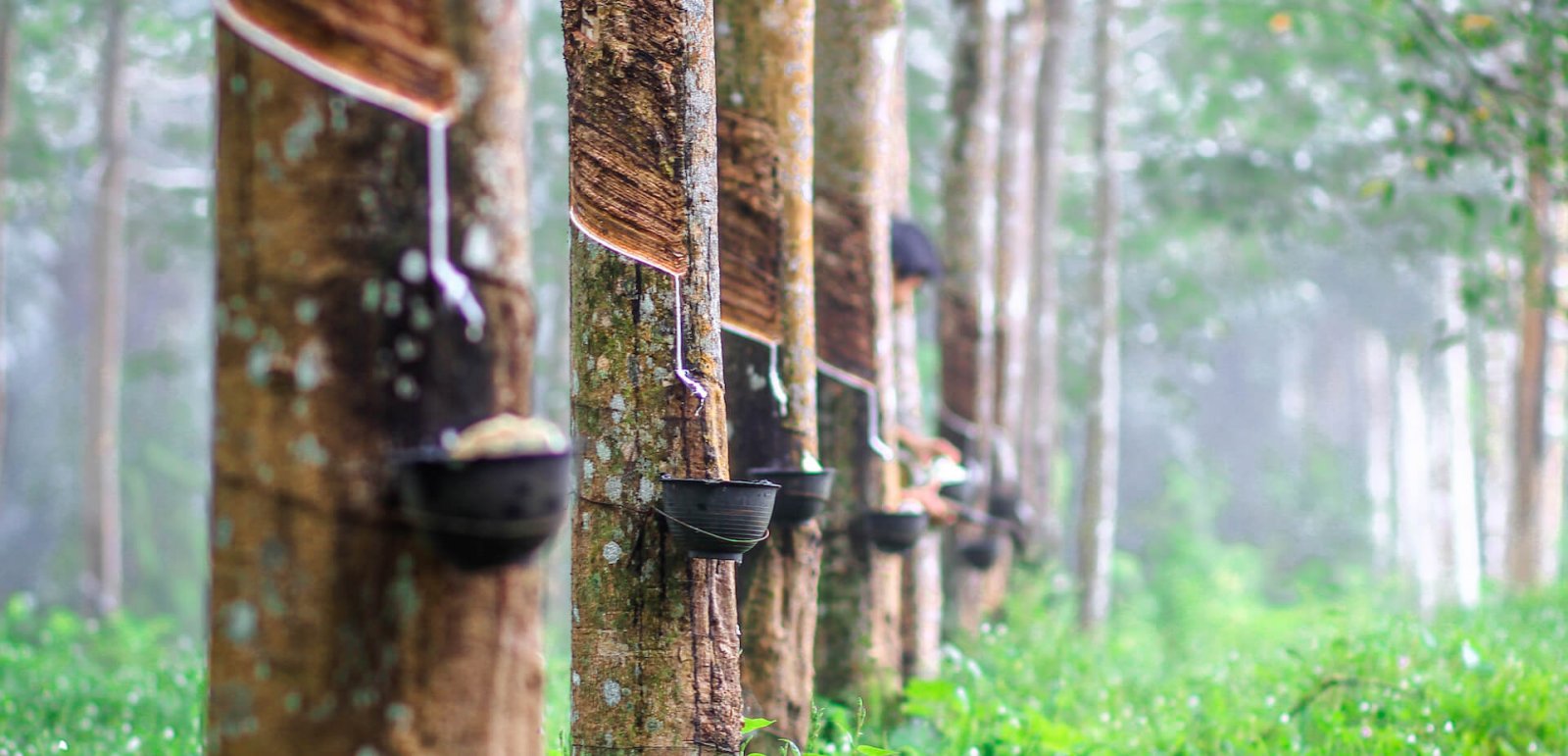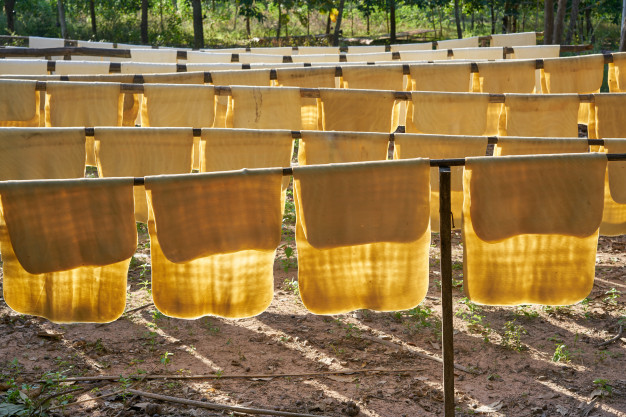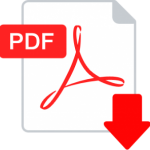General Description of Malasian Rubber
Standard Malasian Rubber (SMR), caucho or caoutchouc, as initially produced, consists of polymers of the organic compound isoprene, with minor impurities of other organic compounds, plus water.
Thailand, Malaysia are two of the leading rubber producers. Types of polyisoprene that are used as natural rubbers are classified as elastomers.
Currently, rubber is harvested mainly in the form of the latex from the rubber tree (Hevea brasiliensis) or others. The latex is a sticky, milky colloid drawn off by making incisions in the bark and collecting the fluid in vessels in a process called “tapping”.
The latex then is refined into rubber that is ready for commercial processing. In major areas, latex is allowed to coagulate in the collection cup. The coagulated lumps are collected and processed into dry forms for sale.
Malasian Rubber is used extensively in many applications and products, either alone or in combination with other materials. In most of its useful forms, it has a large stretch ratio and high resilience, and is extremely waterproof.
About 70 per cent of natural latex is used for tires. Other products made of natural rubber are e.g. mattresses, condoms, shoe soles, hot water bottles, balloons, rubber boots and seal rings.
(SMR) can be substituted by synthetic rubber for some applications. Synthetic rubber is made from petroleum (i.e. fossil fuel). In many products – such as car tires – natural as well as synthetic rubber is used.
Malasian Rubber is one of the most important polymers for human society.
In some plants it also contains rubber., a milky liquid present in either the latex vessels (ducts) or in the cells of rubber-producing plants. Around 20,000 species of plants produce latex, but only 2,500 species have been found to contain rubber in their latex.
The biological function of rubber for the plants is not fully known. However, it has been shown that rubber can help plants to heal after they are damaged, by covering wounds and stopping the bleeding. This blocks the entry of harmful bacteria and viruses into the plants.
The properties of rubber include high strength and the capability to be stretched many times without breaking. Natural rubber compounds are exceptionally flexible, good electrical insulators, and are resistant to many corrosive substances.
Rubber is obtained from the leachate of more than 400 species of plants, and most of the world’s rubber is produced from a Brazilian tree more than 35 meters high called “Hawa brasilincis”.
now Malaysia in Southeast Asia has the largest resources of natural rubber in the world. Rubber or synthetic rubber was first produced on an industrial scale during World War II.
Since then, significant advances in the synthetic rubber industry have led to the production of quality products in this field. Since the mid-1960s, the production of synthetic rubber has been much higher than the production of natural rubber.
Synthetic rubber has had many applications in various industries such as the aircraft manufacturing industry due to its properties such as better resistance to chemicals, heat and oil than natural rubber.
Uses of Malasian Rubber
Standard Malasian Rubber is an essential raw material used in the creation of more than 40,000 products.
It is used in medical devices, surgical gloves, aircraft and car tires, pacifiers, clothes, toys, etc. Natural rubber is obtained from latexA whitish milky fluid containing proteins, starch, alkaloids, etc., that is produced by many plants.
Uncured rubber is used for cements; for adhesive, insulating, and friction tapes; and for crepe rubber used in insulating blankets and footwear. Vulcanized rubber has many more applications.
Resistance to abrasion makes softer kinds of rubber valuable for the treads of vehicle tires and conveyor belts, and makes hard rubber valuable for pump housings and piping used in the handling of abrasive sludge.
The flexibility of rubber is appealing in hoses, tires and rollers for devices ranging from domestic clothes wringers to printing presses; its elasticity makes it suitable for various kinds of shock absorbers and for specialized machinery mountings designed to reduce vibration.
Its relative gas impermeability makes it useful in the manufacture of articles such as air hoses, balloons, balls and cushions. The resistance of rubber to water and to the action of most fluid chemicals has led to its use in rainwear, diving gear, and chemical and medicinal tubing and as a lining for storage tanks, processing equipment and railroad tank cars.
Because of their electrical resistance, soft rubber goods are used as insulation and for protective gloves, shoes and blankets; hard rubber is used for articles such as telephone housings, parts for radio sets, meters and other electrical instruments.
The coefficient of friction of rubber, which is high on dry surfaces and low on wet surfaces, leads to its use for power-transmission belting and for water-lubricated bearings in deep-well pumps. Indian rubber balls or lacrosse balls are made of rubber.
Types of rubber:
- (SMR20)
- (SMR10)
- (SMR GP)
- (SMR L)
Natural rubber
Natural rubber is present in the sap of the air tree and is produced from the polymerization of hydrocarbons called methyl and isoprene. Because the rubber structure is made up of a double bond, heat dissipates with sulfur or sulfur, binding them together and absorbing the sulfur atom, resulting in rubber becoming rubber.
Synthetic rubber
Because synthetic rubber is produced through the process of vulcanization (heating rubber with sulfur), the rubber produced is called vulcanized rubber. There are other synthetic rubbers made from other compounds.
Specification of Natural rubber:
| Parameter | Unit | SMR CV50 |
SMR CV60 |
SMR L |
SMR 5 |
SMR GP |
SMR 10 |
SMR 10CV |
SMR 20 |
SMR 20CV |
| Dirt (max) | %wt | 0.02 | 0.02 | 0.02 | 0.05 | 0.08 | 0.08 | 0.08 | 0.16 | 0.16 |
| Ash (max) | %wt | 0.50 | 0.50 | 0.50 | 0.60 | 0.75 | 0.75 | 0.75 | 1.00 | 1.00 |
| Nitrogen (max) | %wt | 0.60 | 0.60 | 0.60 | 0.60 | 0.60 | 0.60 | 0.60 | 0.60 | 0.60 |
| Volatile Matter (max) | %wt | 0.80 | 0.80 | 0.50 | 0.80 | 0.80 | 0.80 | 0.80 | 0.80 | 0.80 |
| Po (min) | NA | NA | 35 | 30 | NA | 30 | NA | 30 | NA | |
| PRI Index (min) | 60 | 60 | 60 | 60 | 50 | 50 | 50 | 40 | 40 | |
| Lovibond Color: individual value (max) |
NA | NA | 6.0 | NA | NA | NA | NA | NA | NA | |
| Lovibond Color: range (max) |
NA | NA | 2.0 | NA | NA | NA | NA | NA | NA | |
| Mooney Viscosity (ML, 1+4, 100ºC) |
50 +/- 5 | 60 +/- 5 |
NA | NA | 65 +7/-5 |
NA | 60 +7/-5 |
NA | 65 +7/-5 |
Specification of Natural rubber





